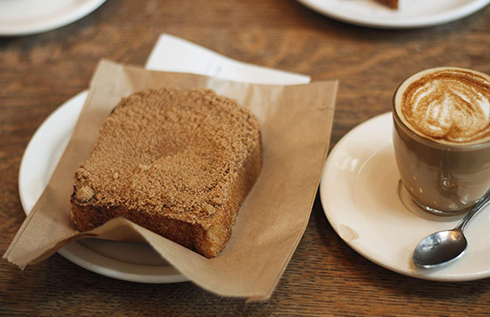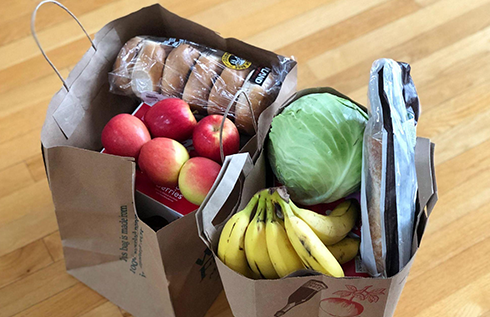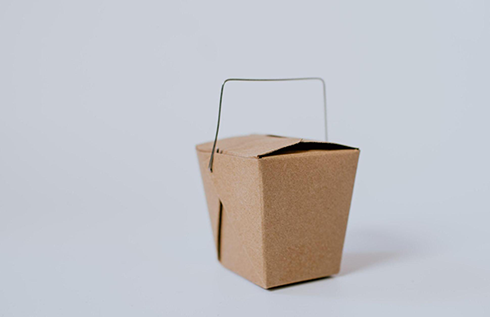Kraft paper has made a significant contribution to satisfying the growing market for a more sustainable solution to food packaging. There’s no denying that kraft paper packaging options have increased in popularity in the packaging business, and the material’s capabilities are still expanding.
The sulfate pulping technique is used to create it. It normally has a basis weight of 18–200 lbs, with the average weight being between 25 and 80 lbs (11.3–36.3 kg).
The color of natural or untreated kraft paper is light brown, whereas bleached kraft paper is white. Natural kraft paper is the most durable of the common packaging materials, and it’s utilized in food take-out boxes, cups, and bowls when toughness is needed. Corrugated board liners are also made from kraft fibers. The toughest white paper is bleached kraft paper.
Here are some reasons why you should choose kraft paper for food packaging.
Durability

Kraft paper is made in a way that makes it naturally durable. However, the finished pressed paper can be made considerably tougher and sturdier by coating it with PE or polyethylene. This also serves to protect the kraft paper from humidity and bacteria, albeit one disadvantage is that it makes recycling more difficult.
And kraft paper packaging can be used in several food packaging applications, such as cake boxes, cups, and bowls. Kraft paper is quite popular in the food sector, and its performance is far greater, not only in terms of moisture-proofing or waterproofing, but also in terms of oil immersion, and low-temperature freezing, and long expiration periods, among other things.
And, while the performance difference between food-grade packaging kraft paper and plastic, glass, and other packaging materials is not significant, the cost of food-grade packaging Kraft paper is significantly cheaper than that of general packaging materials.For a comprehensive overview, see Different Types of Paper Used in Food Packaging
Eco-Friendly: Sustainability
We realize that kraft paper is eco-packaging for two reasons: it can be recycled and reused, and some Kraft paper is created from recycled waste pulp, making it ecologically friendly Kraft cardboard. The primary distinction between recycled Kraft paper and regular Kraft paper is in the raw ingredients used.
Unlike ordinary paper, kraft paper is made and printed using a much simpler method that utilizes far fewer chemicals. Without affecting their quality, these compounds can be retrieved, used, and reused.
Ordinary kraft paper is formed of raw wood pulp, whereas recycled Kraft is created from recycled pulp. Because recycled kraft paper employs recycled pulp, which often has a high number of impurities, the physical Kraft paper qualities and quality of recycled Kraft paper are slightly lower than those of original wood pulp kraft paper. The “drop powder” phenomena will also show on some recycled Kraft paper printers.
As a result, original wood pulp Kraft paper is commonly utilized in the market for packaging food.
Kraft paper can also be made from several types of wood. Bamboo and pine aren’t commonly used in the production of traditional paper. Pine is excessively resinous, and bamboo takes a long time to prepare effectively, making it prohibitively expensive for most everyday usage. Both of these sorts of common woods, on the other hand, benefit greatly from the kraft paper process.
Finally, brown kraft paper and the procedure that goes into generating it are self-sustaining, and any portions that aren’t may be reused, making it an excellent choice for organizations that want durability while also highlighting their green manufacturing practices.
A Wide Range of Design: Versatility

The versatility of kraft paper is astounding. Brown paper is another name for it. It’s a rough paper that comes in a variety of weights and has a brown tone. Its color is due to the fact that it is created from unbleached chemical pulp. It is extremely resistant, allowing for a wide range of applications. Discover the process in Revealed: How Are Paper Bags Made.
- Personalized Kraft Paper Food Packaging
Customized Kraft paper food packaging can help spread brand awareness. When customers go to the shop to buy food, they frequently select those with appealing product packaging if they don’t know the taste, and the use of customized food-grade Kraft paper packaging often provides people with a unique visual effect, making it easier to grab consumers’ attention.
For brands, good packaging (such as the usage of customized Kraft packaging) is ultimately aimed to capture consumers’ attention on supermarket shelves in the first place, causing them to make a buy. In order to attain this goal, marketers must communicate the product’s uniqueness in their advertising.
And, in commodity packaging, personalized elements must be highlighted, whether through color or packaging material that differs from the competition. Only in this way will buyers be able to see the adverts again after their next visit to the mall, as personalized packaging causes resonance, which stimulates the purchase urge.
- Writing in Kraft Paper
With a grammage of 70, this paper is easy to write on and absorbs ink wells that aren’t too liquid. It’s ideal for custom food packaging printing.
For some creative brands and stores, they can also write handwritten notes on the packaging to thank customers for their visit, which is also a useful technique for improving customer satisfaction.
Clean & Safe for Food

Kraft paper is the safest for food packing, according to experts. Kraft paper is a food-grade packaging material created from wood pulp or agro-based resources that pose no risk of contamination, making it completely safe for consumption. The FDA in the United States and the BRC in the United Kingdom have both granted the green light to kraft paper for food packaging.
Food-grade kraft paper is ideal for direct contact with food and is safe. Because no chemical additives for attractiveness are applied during the production, they usually appear brown. For baking, certain kraft will be processed with food-grade material, such as glassine paper with edible silicon, for a better food package. Its water and grease proofing capabilities, however, aren’t great.
Light & Easy Packing
For a variety of reasons, corrugated cardboard composed of kraft paper is the preferred food packaging option.
- It’s not too heavy.
- It’s long-lasting.
Corrugated kraft boxes don’t add any more weight to your merchandise because they’re lightweight. Keeping your item’s overall weight low implies you’ll have fewer shipping fees to absorb or pass on to your consumer. At the same time, your customers don’t have to struggle to carry the product.
It can keep the goods of a box safe from swinging around inside because it’s lightweight while still being relatively robust. Kraft paper is a terrific addition to your packing supplies because it is robust, but it can also be used to wrap things to protect them.
Conclusion

Because of its many advantages, kraft paper has grown in popularity and has become the primary component of a wide range of food packaging. You may now use kraft food takeout containers, eat your salad in a kraft basket, follow up with a burger in a kraft shell, savor elegantly packaged pastries in a kraft box, and drink coffee from a small kraft mug. Finally, you’ll realize that kraft is everywhere!
Kraft paper is the ideal packaging since it is cost-effective, convenient, and environmentally friendly. From small boxes to XXL format, from cold appetizers to a hot meal, from natural design to beautiful style… kraft fits all of the demands of the catering industry!
Contact YoonPak now for your kraft paper packaging needs.







